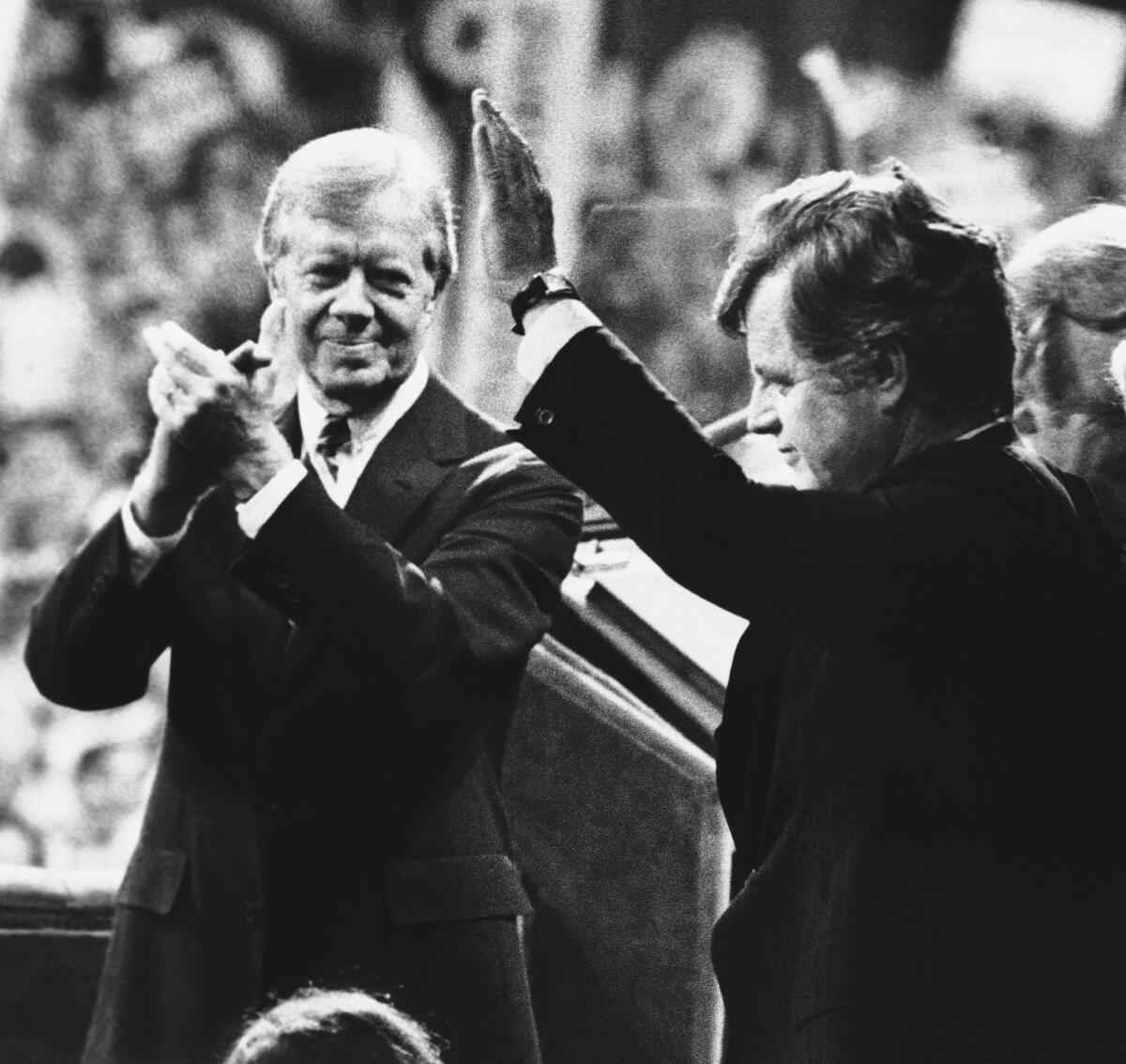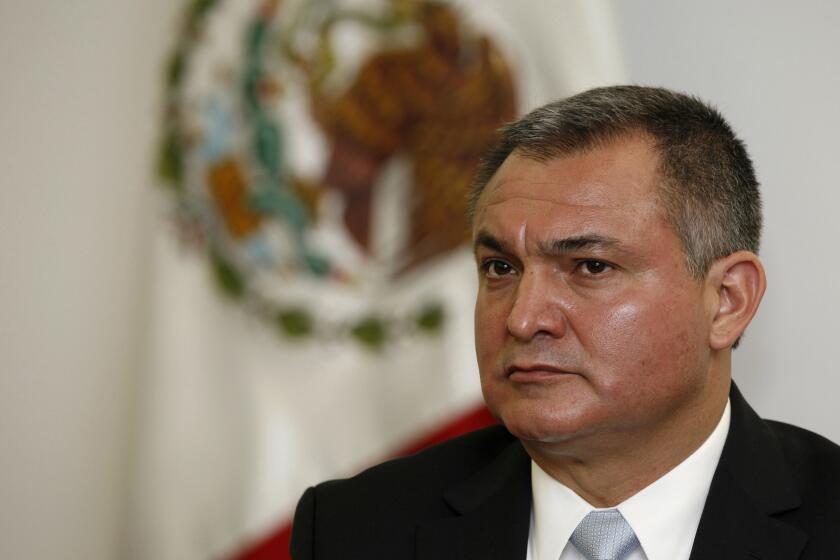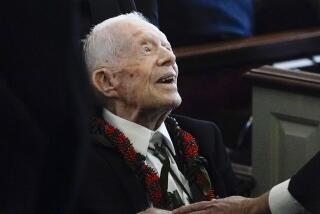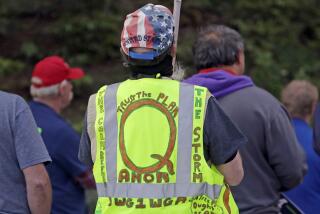The Carters: What you know may be wrong (or not quite right)

PLAINS, Ga. — Exaggeration, misinformation and myth have always infected politics — even before social media took it to the extreme.
Misconceptions take especially strong hold where U.S. presidents are concerned: sometimes to their advantage, sometimes not. Some claims relate to policy, others to their biographies and personal traits.
That George Washington story about the cherry tree? Apocryphal. And his teeth weren’t actually made of wood. (At least some of his “false teeth” were taken from the mouths of enslaved persons.) There’s no evidence that William Howard Taft ever got stuck in a bathtub. (He was the heaviest president on record, though, at more than 300 pounds.)
Genaro García Luna is the highest-ranking current or former Mexican official ever to be tried in the United States.
James Monroe wasn’t the principal force behind the Monroe Doctrine. (That would be his secretary of State and future president, John Quincy Adams.) And Richard Nixon wasn’t actually impeached. (He resigned before the full House could vote on the matter.)
As former President Carter receives home hospice care at the age of 98, misconceptions about his life are coming into focus as well. Most are rooted in some truth but need more context:
Misconception: President Reagan freed the American hostages in Iran.
More accurate: Carter and his administration negotiated their release, but Tehran wouldn’t free them until after Reagan’s inauguration on Jan. 20, 1981.
The details: Iranian revolutionaries stormed the U.S. Embassy in Tehran on Nov. 4, 1979. They would hold 52 U.S. citizens for 444 days. From the outset, Carter resolved not to start a shooting war in response. He authorized a rescue mission in the spring of 1980, but mechanical problems forced the helicopter operation to abort and one crashed, killing eight servicemen.
Carter, a Democrat, continued diplomatic efforts but suffered politically amid intense news coverage of the crisis. He lost in a Nov. 4 landslide to the Republican Reagan. A final round of negotiations began in Algeria after the election. The U.S. delegation was led by Deputy Secretary of State Warren Christopher. Iran and the United States finalized terms for the hostages’ release on Carter’s final full day in office, Jan. 19, 1981, and Carter remained in the Oval Office the next morning, Inauguration Day, seeing through details. They were released shortly after Reagan was sworn in. Reagan then sent Carter to West Germany to greet the freed Americans.
Misconception: Jimmy and Rosalynn Carter founded Habitat for Humanity.
More accurate: The Carters have been Habitat for Humanity’s most famous endorsers and volunteers. But the organization was
established by wealthy businessman Millard Fuller and his wife, Linda, as an outgrowth of a Georgia commune where they spent time in the 1960s.
The details: Habitat grew out of the housing ministry of Koinonia Farm, a multiracial commune in Carter’s home county that was ostracized in the days of Jim Crow segregation. In 1965, Fuller came to the farm for what he’d later describe as spiritual renewal.
Carter biographer Jonathan Alter details that the Rev. Martin Luther King Jr. befriended Koinonia’s white founder, Clarence Jordan, during the civil rights movement. But the nonprofit organization was accused in Georgia courts of being a communist front, and King’s inner circle considered it radical. Jordan was beaten on the streets of Americus, a short distance from Plains. Against this backdrop, Alter writes, Carter kept his distance. Jordan’s nephew, Hamilton Jordan, would become Carter’s White House chief of staff. Alter records the younger Jordan, who died in 2008, saying his uncle viewed Carter as “just a politician.”
Koinonia’s local housing programs were formalized as the “Fund for Humanity” in the late 1960s. Carter was running for governor then. The Fullers established Habitat for Humanity in 1976, the year Carter won the presidency. The Carters’ first volunteer Habitat build was in New York City in 1984. That became the annual Jimmy & Rosalynn Carter Work Project, which would eventually build, renovate or repair 4,400 homes in 14 countries. The Carters worked alongside more than 104,000 volunteers, by the Carter Center’s count.
Misconception: Jimmy Carter was an unabashed liberal.
More accurate: Carter was a moderate politician, campaigned deliberately and, once in office, pursued policies that don’t fit easily under one label.
The details: Carter sought the presidency in 1976 as an outsider in a party largely controlled in Washington by New Deal liberals. Carter was a “Southern Democrat” who never gelled with Massachusetts Sen. Edward M. Kennedy, who challenged him in a damaging 1980 primary. Carter had described himself in Georgia as both “conservative” and “progressive,” depending on the issue, the audience and the campaign. Sometimes he even used those words together.
He was a good-government policy wonk who spent considerable political capital reorganizing government in Atlanta and then Washington. He pushed windfall taxes on big oil (unsuccessfully) but frustrated fellow Democrats on spending priorities and added little to the national debt compared with all his successors (less than $300 billion in four years). The deregulatory era often associated with Reagan actually began with Carter loosening regulations on airlines, trains and trucking.
Carter advocated for a national health program, but his top healthcare bill failed because it didn’t go far enough for party liberals, including Kennedy. Carter grew more openly progressive as a former president, voting for Bernie Sanders in the 2016 presidential primaries. But he also warned his party ahead of 2020 not to move too far left if they hoped to defeat then-President Trump.
Misconception: Jimmy Carter is married to “RAHZ-lyn,” and he was there when she was born.
More accurate: It’s “ROSE-lyn,” and he met her as a newborn — but not immediately.
The details: Eleanor Rosalynn Smith was born in Plains on Aug. 18, 1927. The nurse who delivered her was Lillian Carter, the future president’s mother. But Jimmy Carter, who was born Oct. 1, 1924, was back on the family farm in nearby Archery, outside Plains. “Miss Lillian” brought her son back to the Smiths’ house a few days later to see baby Rosalynn, who is now 95.
As for the pronunciation, remember the flower. The ex-president’s affectionate name for her might help, too. He often calls her “Rosie.”
More to Read
Get the L.A. Times Politics newsletter
Deeply reported insights into legislation, politics and policy from Sacramento, Washington and beyond. In your inbox three times per week.
You may occasionally receive promotional content from the Los Angeles Times.











